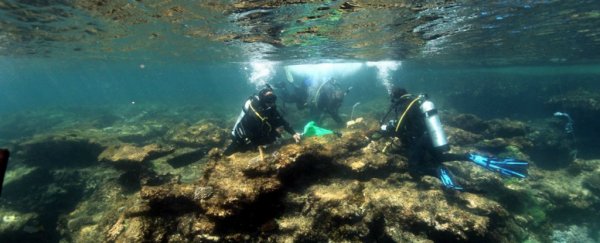The world's largest reproductive event, sometimes called 'the biggest orgy', is about to start.
The synchronised reproduction comes every year when changes in water temperature, tides, and the intensity of moonlight trigger the mass spawning of hundreds of coral species on reefs around the world over several nights.
Egg and sperm cells combine and develop into larvae which later form new coral colonies.
While the Great Barrier Reef has been subject to recent substantial coral bleaching, Ningaloo Reef and other reefs in Western Australia are about to start spawning, within five to 10 days after the March 23 full moon.
Marine scientists from the CSIRO and the Western Australian Department of Parks and Wildlife are studying the spawning and the subsequent dispersal of larvae to help understand the current and future state of the reef.
"Coral spawning is a critical process for reef recolonisation," says Christopher Doropoulos from CSIRO Ocean and Atmosphere. "We are also interested in how many new corals survive to adulthood and help rejuvenate disturbed areas. Understanding the early survival of coral recruits involves a series of manipulative laboratory and field experiments."
The scientists have been collecting information about coral recruitment in the Ningaloo region since 2010.
Major coral bleaching events and cyclones have passed through during this time. Using the information gathered, the team can predict which areas of the reef are likely to recover from future disturbances.
The team is also assessing which environmental conditions improve or limit the survival of the tiny young corals.
This article was originally published by Business Insider.
More from Business Insider:
